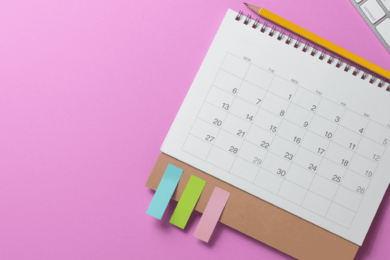Five Marketing Predictions for 2025
Jan 2, 2025By this point, most marketers have become accustomed to the never ending whirlwind of change and evolution in the digital…

Add to Cart. Read More. Subscribe.
Sound familiar? That’s because these are three of the most common CTAs (Call To Actions) found on websites and the chances are you come across several of these terms every day, whether you are browsing Amazon or checking the news.
Designed to encourage users to take a certain action on your website, a CTA can take the form of clickable text (containing a link), images and buttons.
Not only are CTAs vital to driving conversions, they also play a big role in user-experience as a whole, guiding users through your website, providing visual cues and creating a purposeful journey.
A CTA is more than a simple button, there are several important factors that go into crafting effective call to actions, elevating them into a meaningful invitation that drives user engagement.

Just as conciseness and clarity are crucial in your overall user-friendly website design, they are also integral when creating a compelling call to action.
Keep your CTA’s short, precise and easy to understand, giving the user an obvious direction for their next steps.
This means using simple language, avoiding ambiguity and jargon. By using clear terms that resonate with user intent, you will in turn reduce friction and make the user more likely to click.
As any expert website design company would tell you, visual appeal cannot be overstated. Utilising clean aesthetics acts as a silent persuader and when paired with seamless functionality, your website is already on the right track to attract engagement.
Create CTA’s that not only stand out but also align with the overall theme of your website and brand identity.
This means carefully selecting colours, typography and shapes (if your CTA is a button).
Psychologically, colour alone can be a great tool for evoking emotion and influencing user actions, for instance, warm tones like orange create a sense of urgency whilst blue may convey trust.
Visual hierarchy is also key to an effective call to action, guiding users’ eyes to the CTA through strategic design elements, this means that your CTA is not just seen, it actually beckons user interest.
It’s no secret that personalisation is key to a positive user experience, and CTAs are no different.
Tailor your call to actions using dynamic information on user behaviour, preferences and historical interactions.
This could mean recommending products based on past purchases, addressing users by name and personalising CTAs to create a deeper connection with your user.
Personalisation is a fine balance between respecting user privacy to maintain trust and making your user feel like more than just another visitor.
Overall, a well executing personalised call to action shows an understanding of the users needs and individuality, enhancing their experience.
Be meticulous in the placement of your CTAs.
For example, a primary call to action should be immediately visible when a user enters a page without the need for scrolling.
This means your CTA is bound to capture the users attention almost immediately, whether this a sign-up, a purchase or exploration, a CTA placed in the prime real estate near the top of a page sets the tone for user interaction and ensures that it is accessible and compelling from the outset.
Secondary call to actions should be located at key junctures, serving as gentle guides that guide users. These touch points include product pages, information sections or after completing a primary action.
Each secondary CTA is essentially an invite for users to explore further, contributing to the coherence of the page without making the user feel overwhelmed.
As mentioned above, colour can be a pivotal factor in creating a sense of urgency in your CTAs, but there is more you can do to create urgency to drive more conversions.
When you select your colour palette, you will also need to factor in accessibility. For example, people who have certain types of colour blindness may struggle to distinguish red from other colours.
The use of high-contrast colours is strongly recommended (e.g black text on white background). This ensures that not only is your CTA clear and easy to read but it also enables users who may have colour blindness to distinguish your CTA from other elements on the page.
We’ve all heard of FOMO right? Well, fear of missing out can also be a strong trigger for a user to conduct an action on your site.
Phrases such as ‘Limited Time Offer’ or ‘Exclusive Deal’ present the user with a fleeting opportunity, encouraging them to act to avoid losing out.
Scarcity marketing is pretty powerful stuff. Once users respond to the sense of urgency and take action, provide immediate feedback. Affirm their decision with a confirmation message or visual cue that acknowledges their prompt response.
Each element, from a carefully selected colour palette to brand-aligned visual identity, plays a unique role in the user’s experience and as we’ve discussed in previous instalments of our UX blog series, a happy user is far more likely to convert.
In fact if you have missed any previous instalments of ‘UX, The Fine Line Between Enraging & Engaging’ you can find them here
Part 1 – A UX STORY, TOLD BY ENGAGEMENT AND BOUNCE RATES
Part 2 – 5 TIPS FOR USER CENTRIC WEB DESIGN
If you want support creating a user friendly website for your business, contact our team to discover how our experts can provide web design solutions to elevate your digital performance.

By this point, most marketers have become accustomed to the never ending whirlwind of change and evolution in the digital…

We’re working in an incredibly exciting time for SEO, driven by advancements in technology and the ability to harness powerful…

On the 10th July, 2025, Instagram posts will become visible in Google search results, creating unique opportunities for savvy businesses…

If you’re managing social media for a business, you’ll know that success comes from strategy — not spontaneity. That’s where…